David Suzuki's Blog, page 4
August 17, 2017
Time to close chinook fisheries
VANCOUVER -- The federal government's most recent data on Fraser River chinook salmon is so dire that that the fisheries should be closed, according to the David Suzuki Foundation.
"The situation for Fraser River chinook couldn't be worse. We're asking the government to immediately close chinook fisheries to protect these fish and the endangered southern resident killer whales that depend on them for food. Our message to chinook fisheries is: Don't wait for closures; volunteer now to stop fishing chinook," says David Suzuki Foundation Western Canada director Jay Ritchlin.
British Columbia has experienced poor Fraser chinook salmon returns in recent years, but we're now at a critical point where returns are so low that emergency actions are warranted, both for chinook and for endangered marine mammals.
A committee responsible for reviewing the status of wildlife in Canada will be assessing Fraser chinook in 2018. Given this year's exceptionally poor returns, it is likely these populations will also be assessed as threatened or endangered, justifying proactive closures of fisheries that target Fraser chinook.
"In light of the poor returns so far, it's alarming that South Coast marine recreational fisheries are still open," Ritchlin says. "Fishers are still catching up to two chinook salmon per person per day, and they shouldn't be."
Fisheries and Oceans Canada's science clearly shows southern resident killer whales depend on Fraser chinook salmon to survive. Canada's Species at Risk Act requires the government to identify conditions necessary for killer whale recovery. The recent Action Plan for the Northern and Southern Resident Killer Whale (Orcinus orca) in Canada identifies addressing chinook salmon availability as a top priority. Similarly, the Review of the Effectiveness of Recovery Measures for Southern Resident Killer Whales produced for Fisheries and Oceans also prioritizes more conservative chinook management.
Even Alaska, the Pacific Salmon Commission partner which has been most reluctant in the past to reduce its chinook fishery, has closed all fisheries for chinook salmon. This is an important precedent and critical to the ongoing renegotiation of the U.S.-Canada Pacific Salmon Treaty.
"I'm concerned that Canada's failure to support chinook salmon conservation could severely undermine its credibility and position in these negotiations," Ritchlin says.
Scientists at the Foundation sounded the alarm after reviewing the latest in-season information provided by Fisheries and Oceans Canada last week, which recorded the Albion test fishery's overview of total chinook salmon returns to the Fraser River.
-- END --
Media contact:
Jay Ritchlin, Director General for Western Canada
David Suzuki Foundation
Phone: 604-961-6840
Email: jritchlin@davidsuzuki.org
Backgrounder:

Source: DFO Albion Test Fishery
Hey! Want more DSF? Join David Suzuki on Facebook

Wildfires are a climate change wake-up call
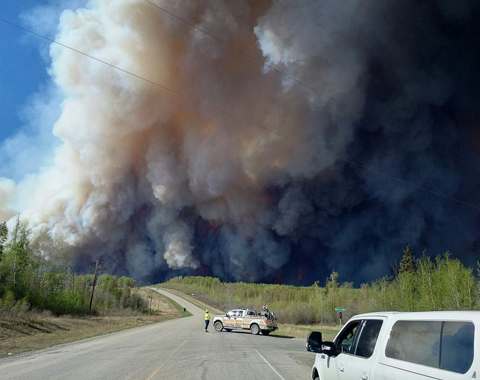
(Photo credit: B.C. Ministry of Transportation and Infrastructure via Flickr)
Wildfires are sweeping B.C. Close to 900 have burned through 600,000 hectares so far this year, blanketing western North America with smoke. Fighting them has cost more than $230 million -- and the season is far from over.
It's not just B.C. Thousands of people from B.C. to California have fled homes as fires rage. Greenland is experiencing the largest blaze ever recorded, one that Prof. Stef Lhermitte of Delft University in the Netherlands called "a rare and unusual event." Fires have spread throughout Europe, North America and elsewhere. In June, dozens of people died in what's being called Portugal's worst fire ever. Meanwhile, from Saskatchewan to Vietnam to New Zealand, floods have brought landslides, death and destruction.
What will it take to wake us up to the need to address climate change? Fires and floods have always been here, and are often nature's way of renewing ecosystems -- but as the world warms, they're increasing in frequency, size and severity. Experts warn wildfires could double in number in the near future, with the Pacific Northwest seeing five or six times as many.
In the western U.S., annual average temperatures have increased by 2 C and the fire season has grown by three months since the 1970s, leading to "new era of western wildfires," according to a recent study led by University of Colorado Boulder wildfire experts, published in Proceedings of the National Academy of Sciences.
Climate change doesn't necessarily start the fires -- lightning, unattended campfires, carelessly tossed cigarette butts and sparks from machinery are major causes -- but it creates conditions for more and larger fires. Lightning, which causes up to 35 per cent of Canada's wildfires and is responsible for 85 per cent of the area burned annually, increases as temperatures rise, with studies showing 12 per cent more lightning strikes for each degree Celsius of warming.
Drier, shorter winters and earlier snowmelt extend fire seasons. As the atmosphere warms, it holds more moisture, some of which it draws from forests and wetlands, and increasing precipitation is not enough to offset the drying. This means fuel sources ignite more easily and fires spread faster over greater areas. Outbreaks of pests such as mountain pine beetles -- previously kept in check by longer, colder winters -- have also killed and dried forests, adding fuel to the fires. Because trees and soils hold moisture on slopes, fires can also increase the risk of flash floods when rains finally arrive.
The human and economic impacts are staggering -- from property destruction to firefighting and prevention to loss of valuable resources and ecosystems. As human populations expand further into wild areas, damages and costs are increasing.
Health impacts from smoke put people -- especially children and the elderly -- at risk and drive health care costs up. Wildfires now kill more than 340,000 people a year, mainly from smoke inhalation.
Fires also emit CO2, creating feedback loops and exacerbating climate change. Boreal forests in Canada and Russia store large amounts of carbon and help regulate the climate, but they're especially vulnerable to wildfires.
Suggested solutions are wide-ranging. The authors of the PNAS study recommend letting some wildfires burn in areas uninhabited by people, setting more "controlled" fires to reduce undergrowth fuels and create barriers, thinning dense forests, discouraging development in fire-prone areas and strengthening building codes.
These adaptive measures are important, as are methods to prevent people from sparking fires, but our primary focus should be on doing all we can to slow global warming.
According to NASA, Earth's average surface temperature has risen by 1.1 C since the late 19th century, with most warming occurring over the past 35 years, and 16 of the 17 warmest years occurring since 2001. Eight months of 2016 were the warmest on record. Oceans have also been warming and acidifying quickly, Arctic ice has rapidly decreased in extent and thickness, glaciers are retreating worldwide, and sea levels have been rising at an accelerating pace. Record high temperature events have been increasing while low temperature events have decreased, and extreme weather events are becoming more common in many areas.
Today's wildfires are a wake-up call. If we are serious about our Paris Agreement commitments, we can't build more pipelines, expand oil sands, continue fracking or exploit extreme Arctic and deep-sea oil.
Hey! Want more DSF? Join David Suzuki on Facebook

August 15, 2017
B.C.'s trophy hunt ban a good step but loophole puts bears at risk
VANCOUVER -- B.C.'s cancellation of the grizzly bear trophy hunt is a good step but a loophole that allows hunting the bears for meat is cause for concern, according to the David Suzuki Foundation. The provincewide ban goes into effect on November 30, following this year's hunting season. It will not prohibit hunters from killing grizzly bears for meat outside of the Great Bear Rainforest.
"We really hoped provisions to ban the hunt in the Great Bear Rainforest would apply to the whole province," said David Suzuki Foundation Ontario and Northern Canada director Faisal Moola. "The government's decision means hundreds of grizzly bears will be spared, and that is welcome news. Their pelts, paws, heads and other body parts will no longer be displayed by foreign or local hunters as trophies."
Bear experts have long known that keeping grizzly populations healthy means protecting their habitat and ensuring humans do not needlessly kill them.
"Although this decision will help reduce the numbers of grizzly bears killed by humans, the provision allowing them to be killed for meat means bears will still be killed," Moola said. "Grizzly bears are a federally ranked species at risk and it is unclear how a grizzly bear food hunt could be regulated and enforced to ensure hunters do not needlessly shoot bears."
The David Suzuki Foundation has campaigned for an end to killing of grizzly bears for close to 15 years. It has published numerous scientific studies on the controversial practice, mobilized thousands of B.C. residents in opposition to the trophy hunt and last year successfully convinced B.C.'s auditor general to open an investigation into trophy hunt management and other grizzly bear policies.
A century ago, 35,000 grizzly bears lived in British Columbia and flourished from Alaska to Mexico and east across the Prairies. Today, only about 15,000 grizzly bears inhabit B.C. and have been eliminated from the Lower Mainland, the Okanagan and around Fort St. John.
Grizzlies are highly sensitive to human impacts such as loss and fragmentation of their forest and mountain habitats by clearcuts, roads, oil and gas pipelines and other industrial infrastructure. Female bears reproduce later in life and often produce only a small number of cubs that survive into adulthood. Grizzlies travel long distances to find food, putting them at risk of coming into contact with hunters, roads, towns and other human encroachments into their habitat.
Unlike B.C.'s plan, the Alberta government has maintained a moratorium on all grizzly bear hunting since 2006. Grizzly bear hunting is also banned in the continental United States. B.C. grizzly populations remain healthy in many parts of the province, but independent analyses have found widespread overkilling of bears in some areas and at rates that exceed government limits.
- 30 -
Media contacts:
Faisal Moola, Director of Ontario and Northern Canada
647-993-5788
fmoola@davidsuzuki.org
Theresa Beer, Communications Specialist
778-874-3396
tbeer@davidsuzuki.org
Hey! Want more DSF? Join David Suzuki on Facebook

August 10, 2017
We only have one Earth, and we're overshooting its capacity
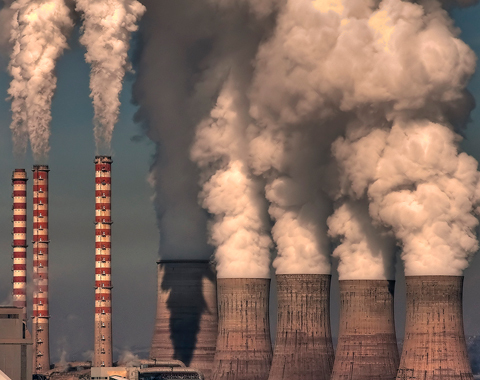
(Photo credit: Emil Athanasiou via Flickr [cropped])
August 2 was Earth Overshoot Day. Unlike Earth Day or Canada Day, it's not a time to celebrate. As the Earth Overshoot Day website explains, it marks the time when "we will have used more from nature than our planet can renew in the whole year." That is the definition of unsustainable and means we're using up the biological capital that should be our children's legacy. We would require 1.7 Earths to meet our current annual demands sustainably.
It doesn't have to be this way. "Our planet is finite, but human possibilities are not. Living within the means of one planet is technologically possible, financially beneficial, and our only chance for a prosperous future," says Mathis Wackernagel, CEO of the Global Footprint Network, an international research organization that uses UN statistics and other sources to calculate when overshoot day falls every year. This year marks the earliest overshoot date yet.
(Wackernagel was a student of University of British Columbia ecologist William Rees. They popularized the footprint concept in their 1996 book, Our Ecological Footprint. Andrew Simms of the U.K.'s New Economics Foundation conceived Earth Overshoot Day, partnering with the Global Footprint Network in 2006 on the first campaign, and with conservation organization WWF starting in 2007.)
According to the website, overfishing, overharvesting forests and emitting more carbon dioxide into the atmosphere than natural sinks like forests can sequester are among the ways we overshoot Earth's capacity. The consequences are serious. "Impacts of ecological overspending are apparent already in soil erosion, desertification, reduced cropland productivity, overgrazing, deforestation, rapid species extinction, fisheries collapse and increased carbon concentration in the atmosphere," it notes. "Natural capital constraints also pose a threat to economic performance and economic stability."
Climate change is the most serious result. The Global Footprint Network says our carbon footprint makes up 60 per cent of our total ecological footprint, and it's increasing rapidly. Basing its calculations on "the land area required to sequester carbon dioxide emissions from fossil fuel burning and cement production", the network says our carbon footprint has more than doubled since 1970.
The network also offers a mobile-friendly personal footprint calculator. Be warned: If you live in North America, your footprint will likely be much higher than 1.7 Earths, no matter how ecologically aware you consider yourself. We use far more energy and other res"":https://www.worldwildlife.org/pages/o... than people in many parts of the world.
The site includes a range of solutions in four areas: food, cities, population and energy. In North America, reducing the carbon footprint by using less energy -- especially fossil fuels -- is major, but so is changing food habits. Food demand makes up 26 per cent of the global footprint. Because raising animals for food requires far more resources and creates more emissions than growing plants, reducing the amount of meat and animal products we eat decreases our footprint. According to Oregon State University researchers, if Americans ate beans instead of beef, the U.S. could meet its 2020 greenhouse gas emissions goals, even if the country did little else and if people continued to eat other animal products.
Food waste is another major problem. One-third of the food produced worldwide is wasted or lost -- as much as 40 per cent in the U.S.
Population is an obvious concern. More people require more space and resources. Strategies to stabilize population growth also have social benefits. "Educating girls and providing access to safe, affordable, and effective family planning" and "empowering women" are essential to reducing population growth and result in better economic development and health outcomes.
Because humans are increasingly urban dwellers -- with 70 to 80 per cent expected to live in cities by 2050 -- things like "energy-efficient buildings, integrated zoning, compact cities, and effective options for people-powered and public transportation" are crucial to reducing our footprint.
Some have criticized the Earth overshoot concept, arguing it's not accurate or that it underestimates resource overuse. Wackernagel admits the calculations are only as good as the available data, but argues that it remains a useful way to put our unsustainable ways in perspective.
Demanding constant economic growth on a finite planet with limited ability to renew resources is a recipe for overshoot. We can and must do more to reduce our growing impact on the only home we have.
Hey! Want more DSF? Join David Suzuki on Facebook

August 9, 2017
TEST Newmode Petition Aug 9

August 8, 2017
An inconvenient letter to the editor
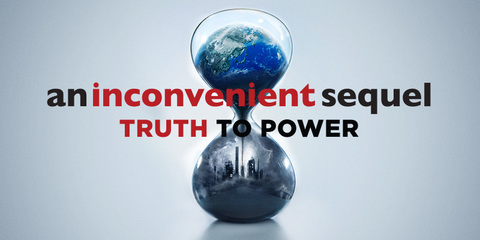
Hey! Want more DSF? Join David Suzuki on Facebook

August 3, 2017
Environmental Protection Act review could strengthen human rights
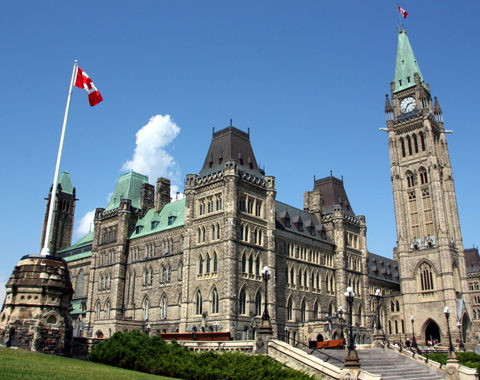
(Photo credit: Márcio Cabral de Moura via Flickr)
Governments change -- along with laws, regulations and priorities. It's the nature of democracies. In Canada, we've seen environmental laws implemented, then weakened or overturned, then strengthened and re-instated. But the basic necessities of health, well-being and life shouldn't be subject to the shifting agendas of political parties. That's why Canada should recognize the right to a healthy environment in its Constitution -- something 110 countries already do.
We're a ways from that, but some promising developments give hope for the possibility that all people in Canada may soon enjoy the right to breathe fresh air, drink clean water, eat healthy foods and take part in decisions that affect their lives. In June, the federal Standing Committee on the Environment and Sustainable Development -- made up of Liberal, Conservative and NDP members of Parliament -- released a report recommending, among other things, that government legally recognize the right to a healthy environment in the Environmental Protection Act.
If government implements the recommendations, it would be the first time the right to a healthy environment has been recognized in Canadian federal law.
The report, based on a year-long review of the act, includes 87 recommendations regarding air- and water-quality standards, toxins in consumer products, protection for vulnerable populations and communities, environmental justice and the right to a healthy environment. If implemented, these recommendations would deliver far-reaching health benefits, so it's no surprise that many people and organizations from the health and medical sectors, academia and beyond have endorsed them. Federal environment and health departments and ministers have until October 15 to review and respond to the report.
The government renewed the Environmental Protection Act in 1999 as the primary law governing toxins and pollution. But it needs further updating and strengthening. Changing conditions, a lack of resources and poor enforcement have limited its effectiveness. The Toronto Public Library collected more late-book fines in one year than the government has collected from fines imposed through the act in 20 years!
Considering that an estimated 7,700 people in Canada die prematurely from causes related to poor air quality and Canada ranks 25th among rich countries on children's well-being, in part because of a failure to improve air quality, improving the act is critical. A study by the International Institute for Sustainable Development shows pollution alone costs Canada more than $39 billion a year.
Acting quickly to implement the recommendations will save lives, prevent illnesses and reduce associated costs. By requiring safe replacements for toxic substances, it will also bolster the green chemistry industry, one of the world's fastest-growing economic sectors.
It could also set a precedent for including environmental rights in other laws, such as the Canadian Environmental Assessment, Fisheries, Navigable Waters and National Energy Board acts, which are also under review. This would help ensure higher standards for air, soil and water quality.
And it could help drive the impetus for a stand-alone environmental bill of rights. In recognizing environmental rights as human rights, the committee's recommendations mark a shift in the way we discuss environmental protection. A stand-alone bill would take the concept further. It would put human and environmental health at the centre of decision-making, and ensure consistency and coherence between different environmental laws. It would help institutionalize environmental rights protection within governing bodies, make the process of implementing environmental rights more transparent and assist judges in making informed and consistent decisions in cases when those rights are violated.
Ultimately, the right to a healthy environment should be included in the Charter of Rights and Freedoms, to ensure consistency in environmental and health protection between provinces and territories and to make it easier to uphold citizens' rights regardless of which federal political party is governing.
The recommendations for improving the Environmental Protection Act are an important stepping stone. They would quickly improve environmental protection in Canada and pave the way for a stand-alone environmental bill of rights. Our political representatives face many competing interests and priorities, so it's critical for us all to let them know we want them to carefully consider and implement the committee's recommendations.
Hey! Want more DSF? Join David Suzuki on Facebook

July 27, 2017
Local action needed to resolve world's biggest problems
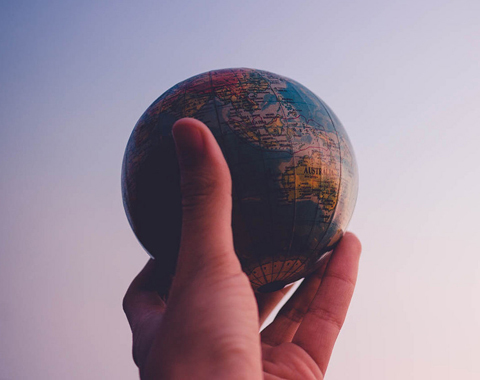
(Photo credit: Hardi Saputra via Flickr)
Humans are an astonishing anomaly. As many species teeter on extinction, our populations grow in size and complexity. From exploring space to eradicating diseases and other remarkable achievements, human curiosity has pushed the outer limits of our physical universe. Yet our ability to embrace shared values has been challenging. More than a billion people live in poverty, inequality gaps are expanding, and we face unprecedented environmental challenges that threaten our survival.
To confront these, heads of states met in Rio de Janeiro, Brazil, in 1992 and established sustainable development as a global undertaking. Known as Agenda 21, the non-binding plan posited that meeting today's human needs shouldn't compromise the needs of future generations. Leaders referred to the 1990s as the "turnaround decade", with multilateral approaches guiding nation states to sign treaties to tackle the world's most pressing issues. (The David Suzuki Foundation was founded in 1990 to help press society to work toward a truly sustainable future.)
In 2000, nations agreed to eight Millennium Development Goals to guide the world to 2015. Although some countries made remarkable gains with these goals, overall success was elusive. Carbon dioxide emissions and the consequent effects of climate change continued to increase, as did water scarcity. The failures were in part because the goals were conceived by heads of states and technocrats in closed-room negotiations with little involvement from the communities and people most affected.
Countries met again in 2015 and employed a more open and collaborative approach to come up with 17 Sustainable Development Goals. Unlike the previous goals, these "global goals" set a new standard for the responsibilities expected from everyone, including political representatives, civil society, scientists and citizens, and apply to both developing and developed nations.
Although Canada ranks 13th out of 149 countries in the 2016 SDG index, 4.9 million people here live in poverty and more than four million experience food insecurity. Outcomes related to violence against women and women's economic participation have seen little improvement and Canada has been criticized for human rights violations toward 1.4 million Indigenous people, who lag behind in almost every SDG category, a legacy of colonialism.
Former UN secretary-general Ban Ki-Moon held high hopes for humanity in light of the goals: "Ours can be the first generation to end poverty -- and the last generation to address climate change before it is too late." Around the world, with support from organizations such as ONE, artists, activists, faith and business leaders, students and scientists are working together to address extreme poverty and preventable disease and respond to inequality and injustice.
We're also seeing a massive global shift to renewable energy, with 48 of the most vulnerable countries committing to a 100 per cent renewable energy transition to achieve the historic Paris Agreement. In Canada, a number of Indigenous communities are building microgrid renewable energy systems. The Lubicon Cree Nation in Northern Alberta is looking away from oilsands toward the sun for energy, launching the Lubicon Solar initiative -- an 80-panel solar project that will create green jobs and reduce the community's fossil fuel reliance.
Organizations and social entrepreneurs are using innovative technology to advance the goals. At this year's World Economic Forum in Davos, Switzerland, Project Everyone teamed up with Pokémon Go to make PokéStops that highlighted the world's most pressing issues. The app Lettuce Grow helps small-scale farmers across Portugal who are struggling to compete with cheap bulk imports connect directly with consumers, boosting Portugal's agricultural industry and local economies.
In Canada, a blueprint to implement the Sustainable Development Goals exists: the Leap Manifesto, supported by more than 46,000 individuals, communities and organizations. In my home province, the BC Council for International Cooperation has developed an interactive map to connect more than 1,600 civil society groups that work on the global goals with local citizens and change-makers.
At the heart of the global goals is one simple message: Leave no one behind. Political representatives have given us an ambitious agenda for the next 15 years, but it's up to us all to respond. An enormous amount of responsibility falls on governments, but they can't achieve these goals alone. Their success relies on innovative, inclusive solutions from active citizens working to better their communities.
Hey! Want more DSF? Join David Suzuki on Facebook

Business and environmental leaders call for strong Canadian oil and gas methane regulations
Tackling methane is the easiest, cheapest way to reduce climate pollution
and stimulate local economies
OTTAWA -- Canada's proposed regulations to reduce methane emissions from the oil and gas industry are a positive development -- however, to fully deliver their economic and environmental potential, they must be strengthened, according to a diverse group of Canadian stakeholders representing business, environment and labour. The oil and gas industry is Canada's largest source of human-caused methane pollution.
Reducing methane from the oil and gas sector is a key aspect of the federal government's pan-Canadian climate framework. Methane is a highly potent greenhouse gas, responsible for about a quarter of today's climate warming -- and those emissions come mingled with a host of other smog-forming and carcinogenic pollutants.
"Peer-reviewed research shows Canada's methane emissions are as much as 250 per cent higher than reported by industry and government," said David Suzuki Foundation science and policy director Ian Bruce. "The responsible course is to move urgently and enact strong regulations to reduce methane emissions from the oil and gas sector and accelerate the transition to a clean energy economy."
Leaked methane is also a wasted product. In 2015, nearly C$370 million worth of natural gas escaped from Canadian oil and gas fields, enough to supply every household in Edmonton and Calgary for a year.
"Reductions in methane emissions in the oil and gas sector can be not only cost effective, but also achievable with existing technologies and techniques. Implementation of reasonable methane controls will provide investors with confidence that companies are taking necessary action to protect the long-term value of their business and promoting a sustainable global economy," according to a group of investors, including Interfaith Center on Corporate Responsibility (ICCR), Ceres Investor Network on Climate Risks and Sustainability (INCR), and Shareholder Association for Research and Education (SHARE), with C$89.75 billion under investment.
Curbing oil and gas methane requires little in the way of new capital or fundamental changes in business practices. Many low-cost solutions are available today. Fixing methane leaks is often as easy as tightening valves and repairing equipment.
"Implementing effective methane regulations is one of the cheapest and easiest ways to reduce greenhouse gas pollution while creating good jobs," said Blue Green Canada program manager Jamie Kirkpatrick. "Innovative Canadian methane management companies are poised for expansion and job growth based on efforts to comply with new methane rules."
In the U.S., existing and proposed state-level policies aimed at reducing oil and gas emissions cover 25 per cent more production than would be covered by Canada's proposed national methane rules. Some states, such as Colorado and California, have gone further than others have and are a model for effective methane regulations.
"Twenty-one countries across the world have recognized reducing oil and gas methane as a huge opportunity, while energy-producing states in the U.S. are pushing forward on methane regulations," said Environmental Defense Fund international affairs director Drew Nelson. "Canada's methane rules -- if strengthened -- will help the country catch up to other jurisdictions."
The group of stakeholders submitted comments independently on the federal draft methane regulations introduced by Environment and Climate Change Minister Catherine McKenna in May. The final federal regulations are expected later this year or early in 2018, with Alberta's provincial methane rules to be proposed in the coming months.
30
Contacts:
Jamie Kirkpatrick, Blue Green Canada, 416-323-9521 ext. 289, jkirkpatrick@bluegreencanada.ca
Stuart Ross, Clean Air Task Force, 914-649-5037, sross@catf.us
Cat Abreu, Climate Action Network, 902-412-8953, catherineabreu@climateactionnetwork.ca
Emily Fister, David Suzuki Foundation, 604-440-5470, efister@davidsuzuki.org
Dale Marshall, Environmental Defence Canada, 613-868-9917, dmarshall@environmentaldefence.ca
Lauren Whittenberg, Environmental Defense Fund, 512-691-3437, lwhittenberg@edf.org
Dale Robertson, Equiterre, 514-605-2000, drobertson@equiterre.org
Kelly O'Connor, Pembina Institute, 416-220-8804, kellyo@pembina.org
Audrey Mascarenhas, Questor Technology Inc., 403-608-8606, amascarenhas@questortech.com
BLUE GREEN CANADA is an alliance between Canadian labour unions and environmental and civil society organizations to advocate for working people and the environment by promoting solutions to environmental issues that have positive employment and economic impacts.
Clean Air Task Force is a non-profit environmental organization with offices across the U.S.. CATF works to help safeguard against the worst impacts of climate change by catalyzing the rapid global development and deployment of low-carbon energy and other climate-protecting technologies through research and analysis, public advocacy leadership and partnership with the private sector. For more information, please visit www.catf.us.
Climate Action Network-Reseau action climat Canada is a coalition of more than 100 organizations that care about how a changing climate affects people, plants and wildlife. It works to advance solutions to managing carbon pollution through sustainable and equitable development.
The David Suzuki Foundation is a leading Canadian environmental non-profit organization that collaborates with Canadians from all walks of life, including government and business, to conserve the environment and find solutions to create a sustainable Canada through science-based research, education and policy work.
Environmental Defence (environmentaldefence.ca): Environmental Defence is Canada's most effective environmental action organization. It challenges and inspires change in government, business and people to ensure a greener, healthier and prosperous life for all.
Environmental Defense Fund (edf.org) is a leading international non-profit organization that creates transformational solutions to the most serious environmental problems. EDF links science, economics, law and innovative private-sector partnerships. Connect with us on Twitter, Facebook, and our Energy Exchange, and Voices blogs.
Equiterre With more than 130,000 followers, 20,000 paying members and 1,953 media mentions (in 2014), Equiterre is Quebec's most prominent environmental group and one of the most influential ENGOs federally. For over 20 years, Equiterre (legal name ASEED) has worked with citizens, farmers, organizations, think tanks, businesses, municipalities and governments of all stripes to influence environment and climate change policies and related practices in Quebec and Canada. Equiterre's national policy work is led out of its Ottawa office.
The Pembina Institute is a non-profit think tank that advocates for strong, effective policies to support Canada's clean energy transition. It has offices in Vancouver, Calgary, Edmonton, Toronto, and Ottawa. Learn more: www.pembina.org
Questor Technology Inc. is a public, international environmental cleantech company founded in late 1994 and headquartered in Calgary, Alberta, with field offices in Grande Prairie, Alberta; Brighton, Colorado; and Brooksville, Florida. The company is active in Canada, the United States, Europe and Asia and focuses on clean-air technologies that safely and cost-effectively improve air quality and support energy efficiency and greenhouse gas emission reductions. Questor provides high-efficiency waste gas combustion systems, as well as power-generation systems and water-treatment solutions utilizing waste heat. Its proprietary combustor technology is utilized worldwide in the effective management of methane, hydrogen sulphide gas (H2S), volatile organic hydrocarbons (VOC's), hazardous air pollutants (HAP's) and BTEX gases, ensuring sustainable development, community acceptance and regulatory compliance. Questor and its subsidiary, ClearPower Systems, are providing solutions for landfill biogas, syngas, waste engine exhaust, geothermal and solar, cement plant waste heat, in addition to a wide variety of oil and gas projects in Canada and throughout the United States, Caribbean, Western Europe, Russia, Thailand, and Indonesia. With a focus on solid engineering design, its products enable clients to operate cost-effectively in an environmentally responsible and sustainable manner. Questor trades on the TSX Venture Exchange under the symbol 'QST'.
Hey! Want more DSF? Join David Suzuki on Facebook

July 20, 2017
Plastic straws suck
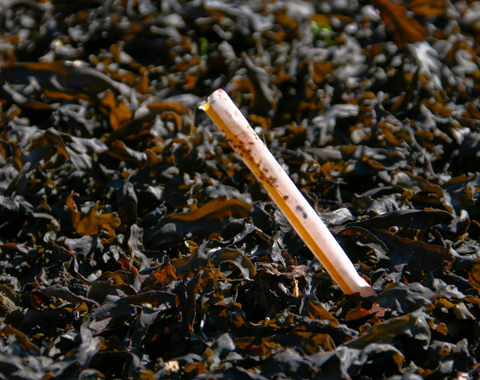
Credit: Stephen Dyrgas via Flickr)
Of all the plastic products we use and take for granted, plastic drinking straws are among the most unnecessary. Designed to be used once and discarded, their only real purpose is to keep your mouth from touching a glass or ice. It made more sense in the days when contaminated vessels were more of an issue.
Now, there's a movement to get people and businesses to ditch the straws. It may not seem like a big deal, but it is. In the U.S. alone, people discard 500 million straws every day, or more than 180 billion a year. That's about 1.4 million kilograms of plastic sent to landfills and into the oceans every day!
Drinking straws have a long history and weren't always a big problem. The first ones were made from straw, or any strawlike grass or plant. That changed in the 1880s when Washington, D.C., resident Marvin Stone was drinking a mint julep through a rye grass stalk. He didn't like the residue it left in his drink, and so he wrapped paper around a pencil, removed the pencil, glued the paper together and a straw was born! In 1888, Stone patented a version made from manila paper coated with paraffin.
Forty years later, Joseph B. Friedman saw that his daughter was having difficulty drinking though a straight straw. He inserted a screw into a straw, wrapped dental floss around the ridges, removed the screw and invented the flexible or "bendy" straw, which he patented in 1937.
The explosion of plastic's popularity in the 1960s and into the '70s spelled the demise of the paper straw. After that, most drinking straw innovations were as much about marketing as function -- including the twisty Krazy Straw and the wide straw-and-spoon combo used to drink slushy drinks.
Plastic straws are now ubiquitous. Whether you're ordering a takeout drink, cold coffee beverage, bar cocktail or glass of water in a restaurant, you'll likely get a plastic straw unless you request your drink without it. And you should. As a Treehugger article notes, they don't biodegrade, they're difficult to recycle, they leach toxic chemicals into the ground and they can end up in oceans. Often, they're incinerated, which puts toxins into the air.
Numerous campaigns have sprung up to get people to forgo drinking straws -- or at least to use less environmentally damaging alternatives. Some restaurants have stopped automatically putting them in drinks, and others are using compostable straws, but most still offer plastic. International spirits company Bacardi has joined with the Surfrider Foundation for a "no-straw movement" as part of its Good Spirited: Building a Sustainable Future program. Surfrider, which has led campaigns against plastic bags, discarded cigarette butts and other ocean threats, has a "Straws Suck" campaign that encourages businesses to get rid of straws. In doing so, bars, restaurants and stores can save money as well as reduce environmental impacts.
As for alternatives, several companies sell re-usable and biodegradable straws made from metal, glass, bamboo, straw or paper. Some come with cleaning brushes. One company is even making straws from pasta, which can be cooked later!
According to the anti-straw group the Last Plastic Straw, 80 to 90 per cent of marine debris is plastic, and as much as 80 per cent of that came from plastics discarded on land. Researchers estimate eight million tonnes of plastic garbage enter the oceans from land every year. Plastic straws are among the top 10 litter items picked up during beach cleanups, with thousands picked up every year. Cigarette butts are the most numerous items picked up, with plastic bottles and caps, food wrappers and bags also in the top 10.
Avoiding plastic straws won't save the oceans or the world on its own, but as we've seen with plastic bags and public smoking, when people start thinking about their habits and making small changes, they can bring about shifts in consciousness that lead to wider societal changes. Ordering your drinks without straws is a small sacrifice but a big step to reducing the amount of plastic we produce and waste. Giving up disposable drink bottles, plastic grocery bags and other unnecessary plastic items, and encouraging businesses to offer alternatives, will also help.
Hey! Want more DSF? Join David Suzuki on Facebook

David Suzuki's Blog
- David Suzuki's profile
- 247 followers



